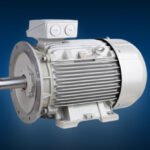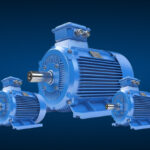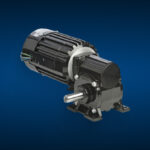Curious about how an electric motor powers everything from industrial machinery to household appliances? This guide breaks it down from the principle of electric motor to the types of electric motor driving modern industries.
We’ll explore the working of electric motor systems, find out who invented electric motor and see how companies like Shrirang Energy Efficient are contributing to this space. Expect a detailed, industry-focused guide with the latest information—perfect for enthusiasts and professionals.
What Is an Electric Motor?
An electric motor converts electrical energy into mechanical motion, the backbone of many applications. Found in pumps, fans, conveyors and even valves supplied by Shrirang Energy Efficient, these devices are critical to industries like oil and gas, petrochemicals and power generation.
Unlike engines that burn fuel, electric motors use electromagnetic principles, making them efficient and versatile for tasks that require precision and reliability.
The Principle Behind Electric Motors
The principle of electric motor works on electromagnetism. When electric current flows through a wire coil in a magnetic field, it generates force. This phenomenon is known as Lorentz force which makes the coil or rotor to spin.
The stator is the stationary component which provides the magnetic field either by permanent magnets or electromagnets. This interaction between current and magnetism produces the motor’s mechanical output, a process that has been refined over centuries.
Who Invented the Electric Motor?
So, who invented electric motor? The story begins with Michael Faraday in 1821 who experimented with electromagnetic rotation. But the first practical electric motor is credited to Thomas Davenport in 1834 who patented a device for industrial use. Over time innovators like Nikola Tesla advanced the field with alternating current (AC) motors and today we have electric motor company giants.
How Does an Electric Motor Work?
Understanding the working of electric motor systems is beautiful. Here’s the step-by-step process:

- Power Supply: Electricity, either AC or DC, enters the motor.
- Magnetic Field Creation: Current flows through coils in the stator, creating a magnetic field.
- Rotor Movement: The rotor inside this field experiences a force due to current flowing through its windings and rotates.
- Mechanical Output: This rotation drives a shaft, which powers equipment like pumps or compressors.
Components like brushes (in DC motors) or slip rings (in some AC motors) ensure continuous current flow, and bearings reduce friction.
Types of Electric Motors
The electric motor types vary by application and power source. Here’s a quick rundown:
- DC Motors: Powered by direct current, these include brushed and brushless variants. Brushed DC motors are simple and cost-effective, good for small pumps, while brushless motors are for high-precision applications.
- AC Motors: Running on alternating current, they split into:
- Synchronous Motors: The rotor spins in sync with the magnetic field, perfect for constant speed needs like power generation.
- Induction Motors: The most common type, where the rotor lags behind the field, is used in fans and conveyors due to their durability.
- Specialty Motors: Stepper motors (for precise positioning) and servo motors (for automation) cater to niche industrial needs.
Each type is for specific needs, from the heavy-duty valves we supply to the pharmaceutical sector’s sterile equipment.
Key Components of an Electric Motor
An electric motor has several critical parts:

- Stator: Generates the magnetic field.
- Rotor: The rotating element that produces mechanical work.
- Commutator: In DC motors, it reverses the current direction to maintain rotation.
- Bearings: Support the rotor, minimizes wear.
- Housing: Protects internals and aligns components
In industrial-grade motors, like those in oil and gas systems, these parts are designed to withstand heat, vibration and corrosion—something we prioritize in our offerings.
Applications in Industry
Electric motors power a lot of industrial equipment. In oil and gas, they drive pumps and compressors for fluid transport.
Petrochemical plants use them for mixing and processing, power generation uses synchronous motors for turbine alignment.
We integrate motors into valves and fittings, so they work seamlessly in high-pressure environments like water treatment and pharmaceuticals.
Recent data shows their dominance: the global electric motor market was $142 billion in 2023 and is projected to reach $192 billion by 2030, growing at 5.6% CAGR (source). This growth is driven by increasing demand for automation and energy efficiency.
Advancements in Electric Motor Technology
The electric motor working has evolved with technology. Modern motors have:
- Efficiency Boosts: High-efficiency designs (IE3 and IE4 standards) reduce energy losses, critical for industries facing rising costs.
- Smart Integration: IoT-enabled motors monitor performance and reduce downtime in plants using Shrirang’s components.
- Material Upgrades: Lightweight alloys and advanced insulation extend motor life in harsh environments.

Challenges and Solutions
Despite being reliable, electric motors have challenges:
- Heat Management: Overheating can degrade performance. Liquid-cooled housings address this.
- Maintenance: Wear on bearings or brushes requires regular maintenance. Predictive maintenance tools now prevent failures.
- Cost: High-performance motors are expensive. But long-term energy savings offset initial investment, something electric motor company leaders will tell you.
For the industries we serve, these solutions ensure continuous operation in tough conditions.
Shrirang Energy Efficient: Our View on Electric Motors
We’ve taken you through the core of electric motor technology—from the principle of electric motor to the various types of electric motor used in today’s industries. We’ve explored the working of electric motor systems and looked at the history of electric motors and who invented electric motor and their applications.
At Shrirang, we see these as more than just components; they’re the backbone of efficiency and reliability in the sectors we serve.
As a leading electric motor manufacturer, we at Shrirang Energy Efficient integrate these technologies into our valves, fittings and flanges for oil and gas, petrochemicals and more. Need solutions for your next project? Contact Shrirang today! Let’s power your operations with precision-engineered components that last.
Frequently Asked Question(FAQs):
Q1. Where are electric motors commonly used?
A. Electric motors are extensively utilized in diverse applications, ranging from household appliances, electric vehicles, industrial machinery, HVAC systems, to power tools. Their efficiency and versatility keep them prominent in any commercial and residential field.
Q2. How do electric motors generate motion?
A. Electric motors generate motion by using the interaction between a magnetic field and electric current inside coils of wire. This creates rotational force (torque) that drives the motor shaft.
Q3. How do AC and DC electric motors differ?
A. The AC (alternate current) motor operates using the change in current direction to cause a rotation, while the DC motor makes use of the commutators to reverse current flow. Most applications in industries utilize AC motors, while most efficient devices operated on batteries prefer DC motors.





